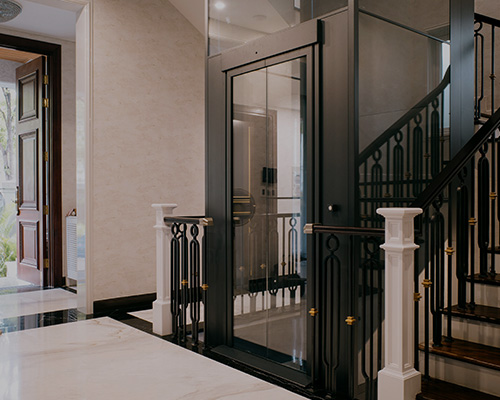
Introduction
Lifts, or elevators, play an essential role in vertical transportation, whether in commercial high-rises or private residences. Technological advancements have chosen between traditional and smart lifts, a critical consideration for businesses, homeowners, and architects. These options differ significantly in energy consumption, maintenance, and user experience, making it vital to evaluate their characteristics to select the most suitable solution.
Defining Traditional Lifts and Smart Lifts
Traditional Lifts
Traditional lifts operate using mechanical systems like hydraulics or traction-based mechanisms. These systems rely on established, straightforward technologies that focus on fundamental functionality. They typically involve push-button controls and manual operations, prioritizing simplicity over advanced features.
Smart Lifts
In contrast, smart lifts integrate cutting-edge technologies, including automation, digital interfaces, and advanced sensors. These systems are designed for energy efficiency and enhanced user convenience. Smart lifts often feature capabilities like destination control, real-time performance tracking, and remote monitoring.
Energy Consumption: A Comparative Study
Energy Efficiency in Traditional Lift Systems
Due to their older technology and constant operation, traditional lifts are often less energy-efficient. For instance, traditional systems’ mechanical components and motors may consume more power, particularly in high-traffic environments. This increased energy usage contributes to higher operational costs and challenges businesses aiming to reduce their carbon footprint.
Energy Efficiency in Smart Lift Systems
Smart lifts are built with energy-saving innovations, such as standby modes, regenerative braking, and optimized scheduling systems. These features significantly reduce energy consumption. By integrating these advanced systems, businesses can lower operating costs and contribute to sustainability efforts, aligning with modern environmental objectives.
Maintenance Costs: Traditional Lifts vs. Smart Lifts
Factors Affecting Maintenance Costs in Traditional Lifts
Traditional lifts often require frequent maintenance due to the wear and tear of mechanical components. Repairs, part replacements, and routine checks can add up over time, making traditional systems more expensive to maintain in the long run.
Cost Analysis of Smart Lift Maintenance
Smart lifts with predictive maintenance and remote monitoring capabilities minimize unexpected downtime and repair costs. Sensors in these systems can detect potential issues early, enabling timely interventions. Smart lifts often require fewer service visits, reducing overall maintenance expenses.
User Experience: Evaluating Efficiency and Convenience
Accessibility and User-friendly Features in Traditional Lifts
Traditional lifts offer essential functionality, including basic controls and reliable performance. However, they lack advanced customization and accessibility features, making them less adaptable to diverse user needs.
Enhanced User Experience with Smart Lifts
Smart lifts elevate user experience through innovations like destination control systems, personalized interfaces, and faster response times. These features optimize passenger flow, reduce wait times, and enhance convenience. For instance, smart lifts can be programmed to prioritize certain floors or integrate with home automation systems, making them ideal for commercial and residential use.
Environmental Impact: Sustainability Considerations
Carbon Footprint Comparison Between Traditional and Smart Lifts
With higher energy consumption, traditional lifts contribute significantly to greenhouse gas emissions. In contrast, smart lifts are engineered for sustainability, incorporating energy-efficient technologies that reduce their environmental impact.
Sustainability Practices in Lift Manufacturing and Usage
Modern lift manufacturers increasingly adopt eco-friendly materials and green design principles to create sustainable solutions. For example, glass elevators, often featured in smart lift designs, combine aesthetic appeal with energy-efficient functionality, making them a popular choice for sustainable architecture.
Future Trends: Advancements in Lift Technology and Industry Innovations
The lift industry continues to evolve with breakthroughs like AI-powered systems, integration with Internet of Things (IoT) devices, and advanced safety features. Future trends indicate a shift towards fully automated and interconnected systems, further enhancing efficiency, accessibility, and environmental sustainability.
Conclusion
Traditional and smart lifts serve distinct purposes, and their choice depends on factors like energy efficiency, maintenance costs, and user experience. While traditional lifts are reliable and straightforward, smart lifts offer advanced features, lower energy consumption, and enhanced convenience.
Evaluating these differences is crucial for those considering lift installation in Australia. By adopting innovative solutions like smart lifts, businesses and homeowners can ensure their systems align with operational goals and sustainability objectives.
Explore the latest lift technology with SWIFT Lifts, Australia’s trusted residential and commercial lift systems provider.Contact us today for expert guidance and tailored solutions that meet your needs!
FAQs
Smart lifts seamlessly connect with IoT systems, enabling integration with building automation for features like energy management, real-time monitoring, and enhanced security.
Smart lifts incorporate advanced safety features like biometric access controls, emergency call systems, and fault detection sensors, providing greater security than traditional systems.
Predictive maintenance and remote monitoring in smart lifts reduce operational downtime by identifying and addressing issues before they escalate, ensuring smoother performance.
Smart lifts offer voice-activated controls, customizable cabin settings, and wider doors, making them more accessible for individuals with disabilities.
Smart lifts provide long-term savings through energy-efficient operations, reduced maintenance needs, and enhanced performance, making them a cost-effective choice for high-rise buildings.
Get in Touch!










